Introduction
Have you ever found yourself feeling persuaded by an argument, only to realise later that something wasn’t quite right? You might have been swayed by a logical fallacy—an error in reasoning that can lead us astray during discussions and decision-making.
Logical fallacies can be sneaky; they can show up in conversations with contractors, during negotiations, or even in marketing pitches about building products and services.
By learning to identify and understand common logical fallacies, you can avoid being misled and make more informed choices. This knowledge is especially useful when navigating the construction of your new home.
Whether you’re a first-time home buyer, or someone involved in the building industry, recognising these fallacies will help you cut through the noise and focus on what really matters: getting the best outcome for your home.
In this article, I’ll introduce you to 10 of the most common logical fallacies, explain how they work, and offer tips on spotting them.
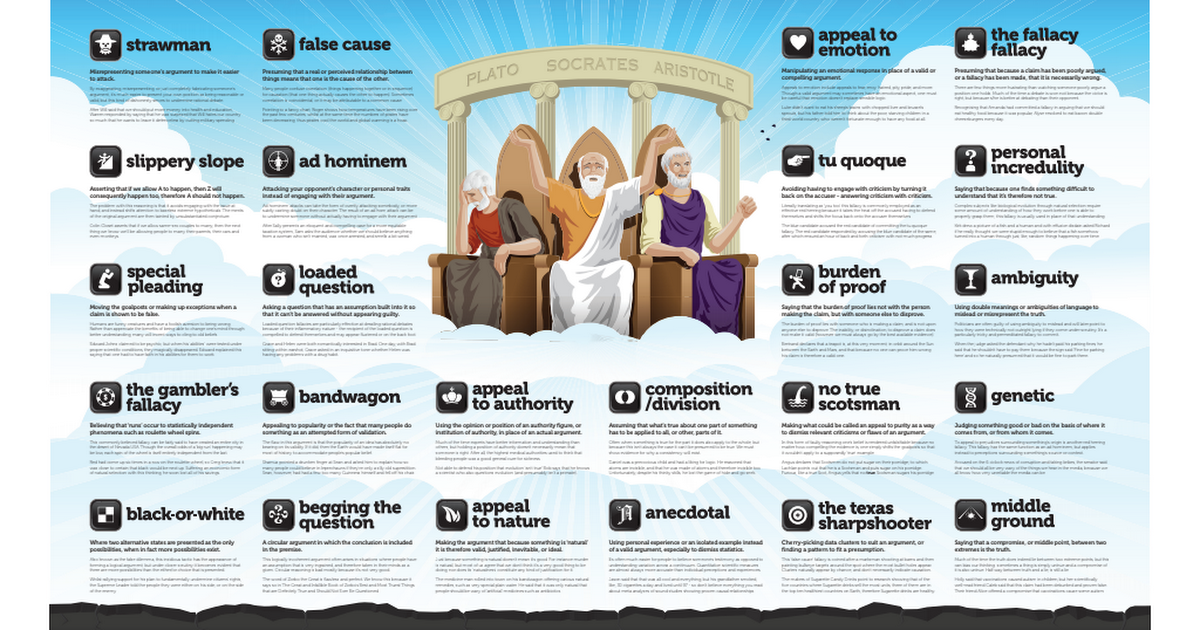
What is a Logical Fallacy?
A logical fallacy is simply an error in reasoning. These fallacies occur when someone makes a flawed argument, either by accident or as a deliberate attempt to persuade you without presenting solid evidence. While some logical fallacies are easy to spot, others can be subtle, especially when delivered confidently or within a complex conversation.
In the context of residential construction, logical fallacies might surface during sales pitches, contract negotiations, or even discussions about materials and design choices. For example, a contractor might use a logical fallacy to rush you into a decision—something that could lead to mistakes, additional costs, or regret later on.
Understanding these errors can help you think more clearly, evaluate arguments more effectively, and protect yourself from making hasty or poorly informed decisions. It’s not just about being a better debater; it’s about making sure you get what you need and deserve during the construction process.
Points to Remember:
- Logical fallacies are errors in reasoning, not necessarily lies.
- They can be used intentionally to manipulate or unintentionally due to poor logic.
- Recognising these fallacies helps you focus on facts, not flawed arguments.
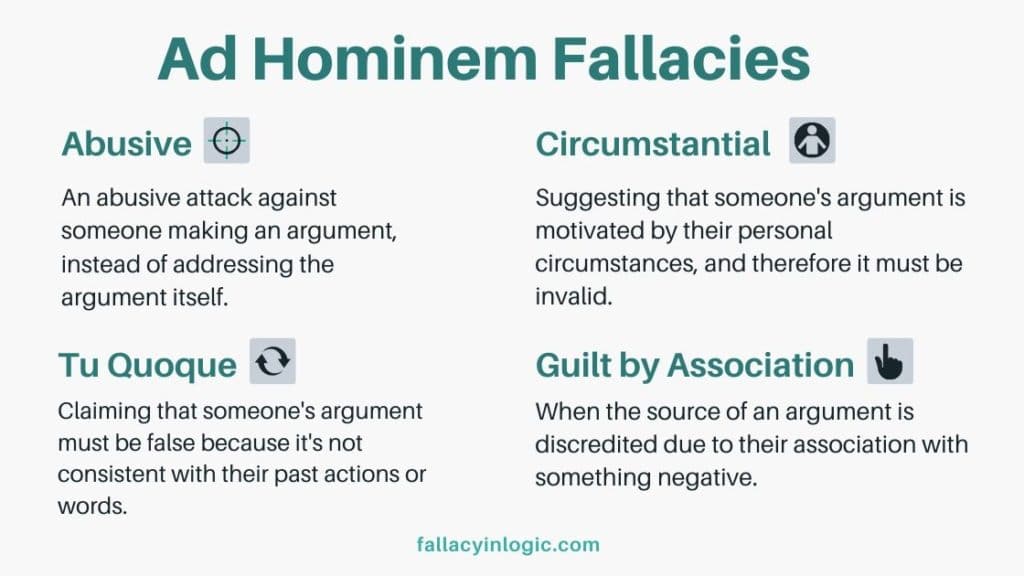
1️⃣ Ad Hominem (Personal Attack)
The ad hominem fallacy occurs when someone attacks the person making an argument rather than the argument itself. Instead of focusing on the issue, they target the individual’s character, background, or other unrelated traits to undermine their credibility.
In residential construction, this fallacy can be particularly misleading. For example, imagine you're discussing renovation plans with a contractor, and they dismiss an opposing viewpoint by saying,
“You shouldn't listen to them; they’ve never even managed a project this big.”
While this may sound convincing, it doesn’t actually address the quality or validity of the opposing argument.
Example:
- Scenario: You’re considering two builders for your project. One builder tries to win your favour by saying, “The other builder has only been in business for five years; they probably don’t know what they’re doing.”
- Explanation: Instead of evaluating the other builder’s work or proposals, this statement attacks their experience level, diverting attention from the actual argument—whether their work is good or not.
How to Spot It:
- Focus Shift: Pay attention if the conversation suddenly shifts from the argument at hand to personal attacks.
- Avoidance of Issues: If someone seems more interested in discrediting others than discussing facts or solutions, it might be an ad hominem attack.
Recognising ad hominem fallacies helps you avoid being distracted by personal attacks and stay focused on the actual information or argument. When this fallacy surfaces, steer the discussion back to the main issue and request specific evidence or reasoning.
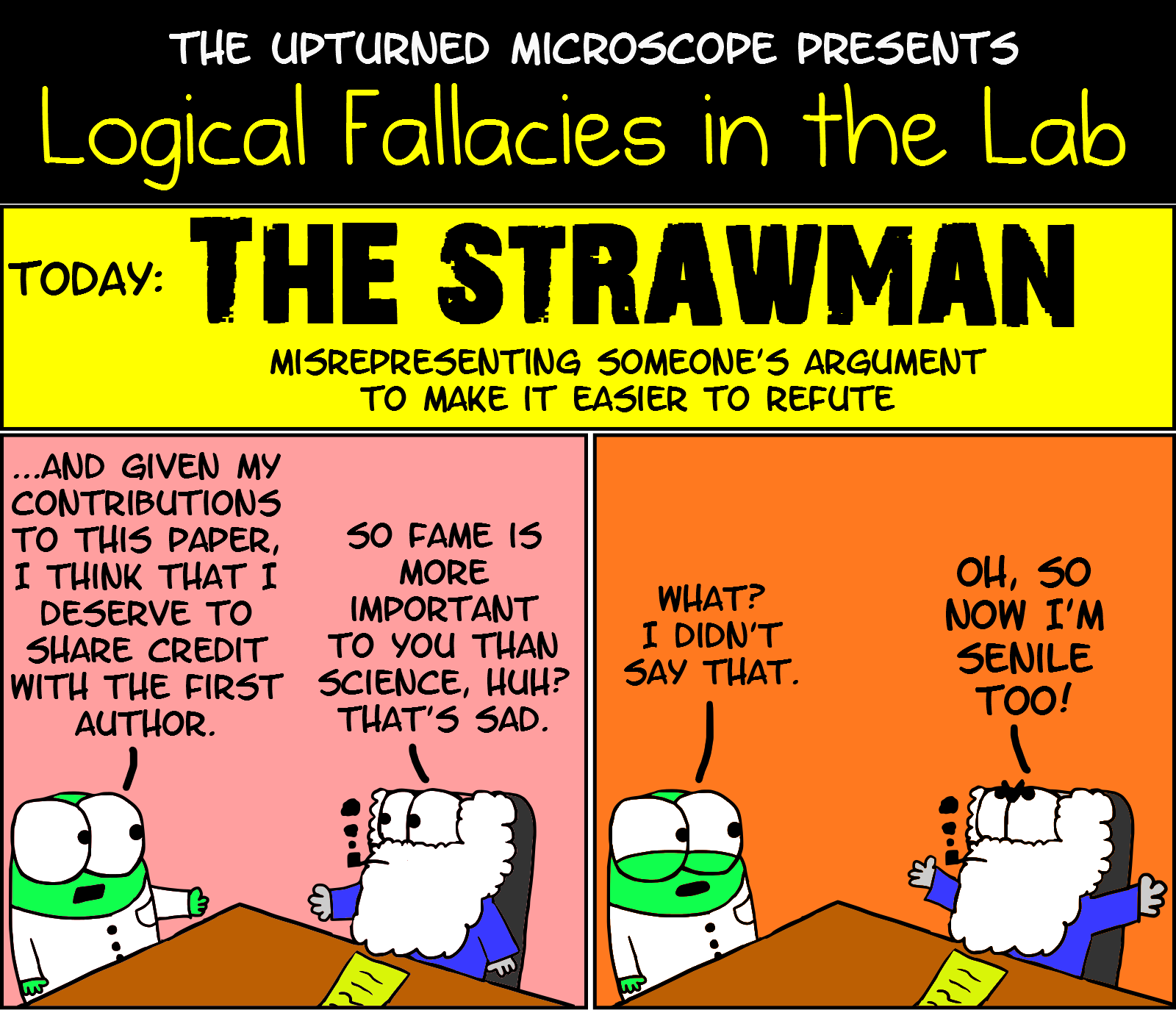
2️⃣ Straw Man
The straw man fallacy occurs when someone misrepresents or oversimplifies an argument to make it easier to attack or refute. It’s like setting up a “straw man” version of an argument that’s weak and easy to knock down, instead of addressing the real, more complex argument.
In residential construction, this fallacy might show up during discussions about renovation choices or budget decisions. Instead of engaging with your actual concerns, someone might distort your argument to make their own viewpoint seem stronger.
Example:
- Scenario: You suggest that it’s best to prioritise quality over cost for certain materials. The response is, “So you think we should just go ahead and buy the most expensive materials for everything, regardless of the budget?”
- Explanation: In this case, the person has distorted your argument, making it appear extreme and unreasonable, even though that’s not what you suggested.
How to Spot It:
- Look for Oversimplification: Pay attention when someone summarises your argument in a way that seems overly simple or exaggerated.
- Clarify Your Position: If you sense your argument is being distorted, calmly restate your original point and emphasise the core message.
When faced with a straw man fallacy, don’t be swayed by the misrepresentation. Instead, keep the conversation grounded by refocusing on your actual argument and encouraging productive discussion.
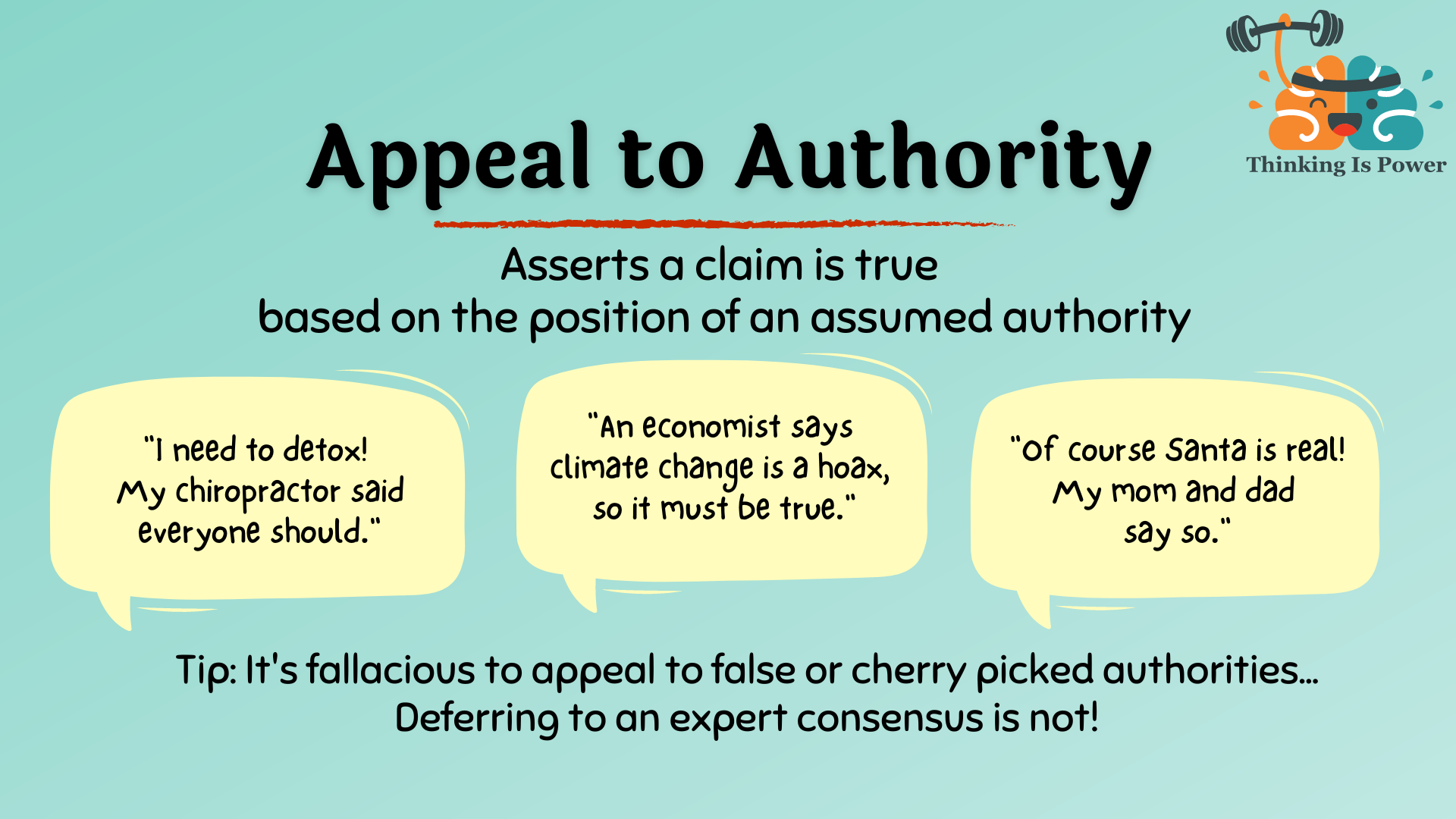
3️⃣ Appeal to Authority
The appeal to authority fallacy occurs when someone relies on the opinion or endorsement of an authority figure as the primary evidence for their argument, rather than presenting solid, relevant facts. While experts can provide valuable insights, this fallacy becomes problematic when the authority cited isn't credible, relevant, or sufficient to support the argument.
In residential construction, this fallacy can be used to sway decisions about design choices, materials, or contractors. For example, you might be told to trust a particular building technique simply because a well-known figure supports it, without providing clear evidence of why it's the best choice for your specific situation.
Example:
- Scenario: A builder tells you, “This method is endorsed by a top construction guru (as seen on the block or MAFS 😄), so it’s definitely the best way to build your home.”
- Explanation: While the authority’s opinion might be helpful, it shouldn’t replace a thorough evaluation of the method’s suitability for your specific project.
How to Spot It:
- Check Credibility: Ask yourself whether the authority cited is truly an expert in the relevant field. For instance, an architect’s endorsement might not hold much weight in choosing the right type of plumbing for your home.
- Look for Evidence: Beyond the authority’s endorsement, ask for data, technical papers, Australian Standards, industry papers, or practical reasons that support the recommendation.
To make sound decisions, focus on evaluating all available information, not just the opinion of an authority figure. It’s wise to listen to experts, but always combine that with other evidence and your own judgement.
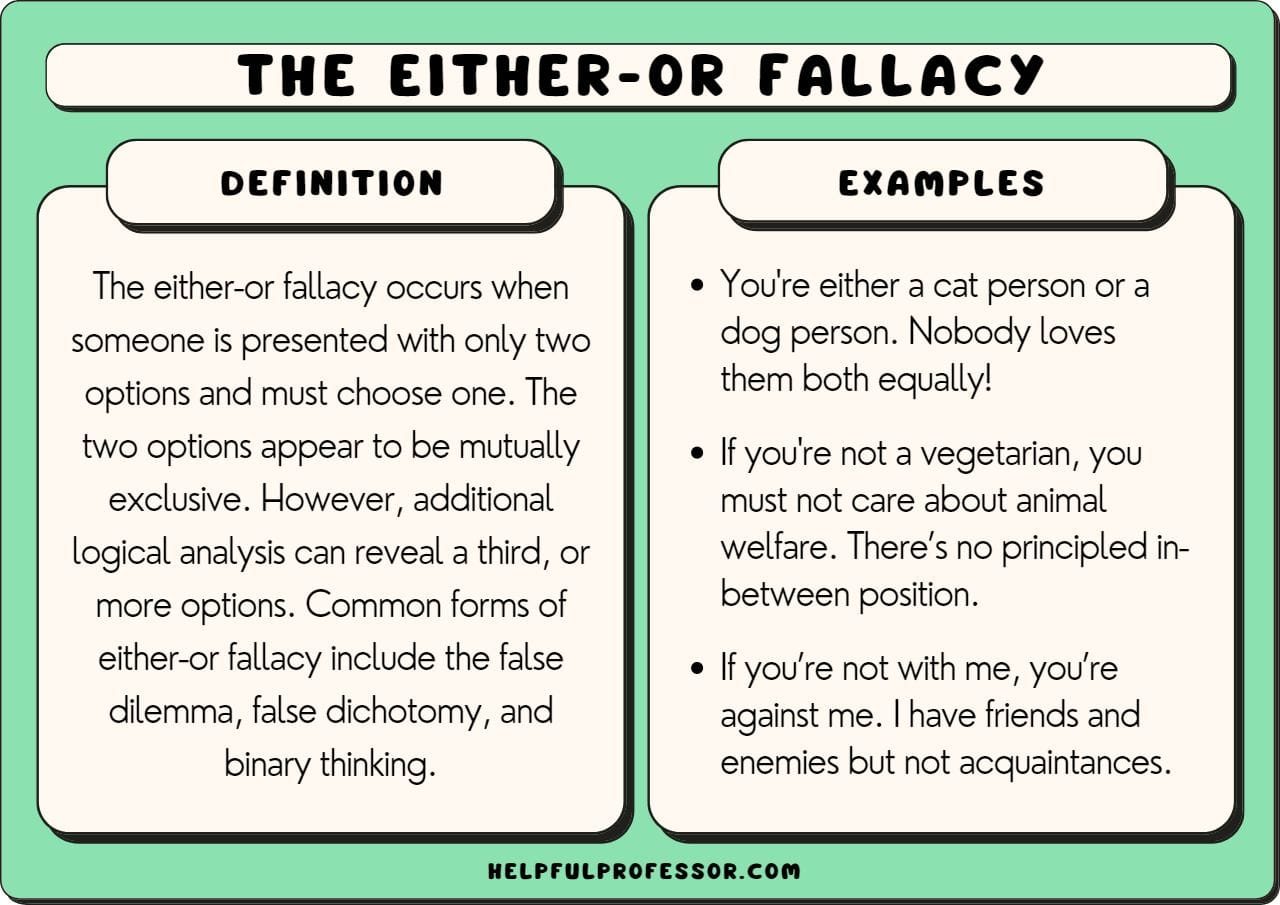
4️⃣ False Dilemma (Either/Or Fallacy)
The false dilemma, also known as the either/or fallacy, presents a situation as having only two possible outcomes, ignoring other potential options. This fallacy is often used to create a sense of urgency or limit your choices, making it seem as if you must pick between two extremes.
In construction, you might encounter this fallacy when contractors or salespeople try to rush decisions by presenting only two options, even when there are actually multiple solutions available.
Example:
- Scenario: A contractor tells you, “You either need to invest in a complete renovation now or watch your home fall apart over the next few years.”
- Explanation: This statement overlooks other possible approaches, like smaller, phased renovations or targeted repairs, creating a false sense of urgency and narrowing your options unnecessarily.
How to Spot It:
- Look for Extremes: If someone presents two extreme options as the only choices, question whether there could be other solutions.
- Consider Alternatives: Ask (qualifying) questions that encourage exploring other possibilities, such as phased projects, alternative materials, or revised timelines that still meet your goals.
Understanding and spotting the false dilemma fallacy allows you to step back and consider a broader range of options, helping you make well-informed decisions that suit your budget and long-term plans.
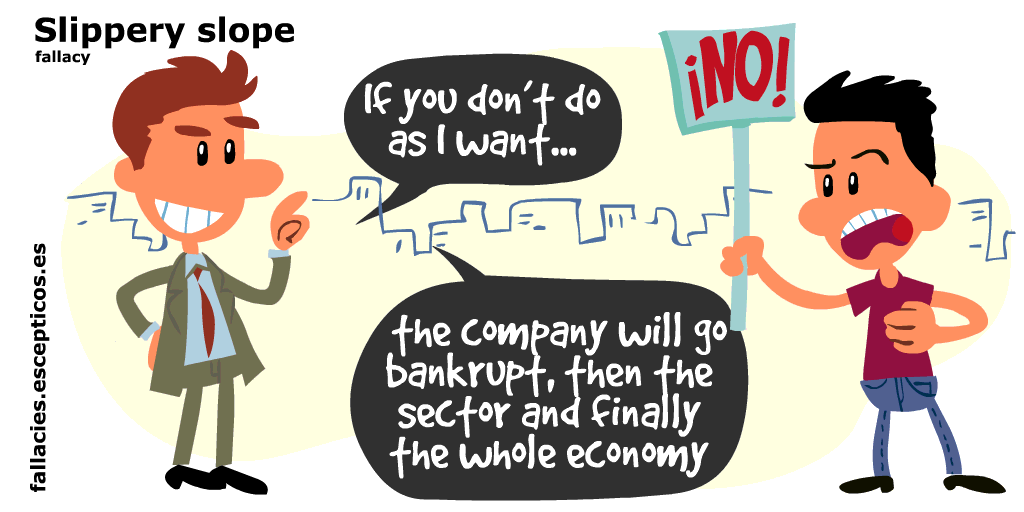
5️⃣ Slippery Slope
The slippery slope fallacy suggests that a particular action will lead to a series of inevitable, negative events without clear evidence to support such a chain reaction.
It’s often used to instil fear, making a decision seem riskier than it actually is.
In residential construction, this fallacy can be used to exaggerate the consequences of a decision, making you feel that even a minor choice will cause major problems down the line. For example, a salesperson might claim that not upgrading to a more expensive feature now will lead to a series of costly renovations later.
Example:
- Scenario: You’re considering whether to add an extra insulation during your build. A builder warns, “If you don’t upgrade the insulation now, you’ll be dealing with sky rocketing energy bills, constant drafts, and even structural damage in a few years.”
- Explanation: While not upgrading insulation could have some impact, the argument here exaggerates the consequences to create fear and urgency.
How to Spot It:
- Examine the Steps: Ask for a clear explanation of how one action will supposedly lead to the extreme outcome.
- Request Evidence: Look for data or studies supporting the proposed chain of events, rather than accepting exaggerated predictions.
Recognising a slippery slope fallacy can help you maintain perspective and make decisions based on realistic outcomes, rather than being driven by fear of unlikely consequences.
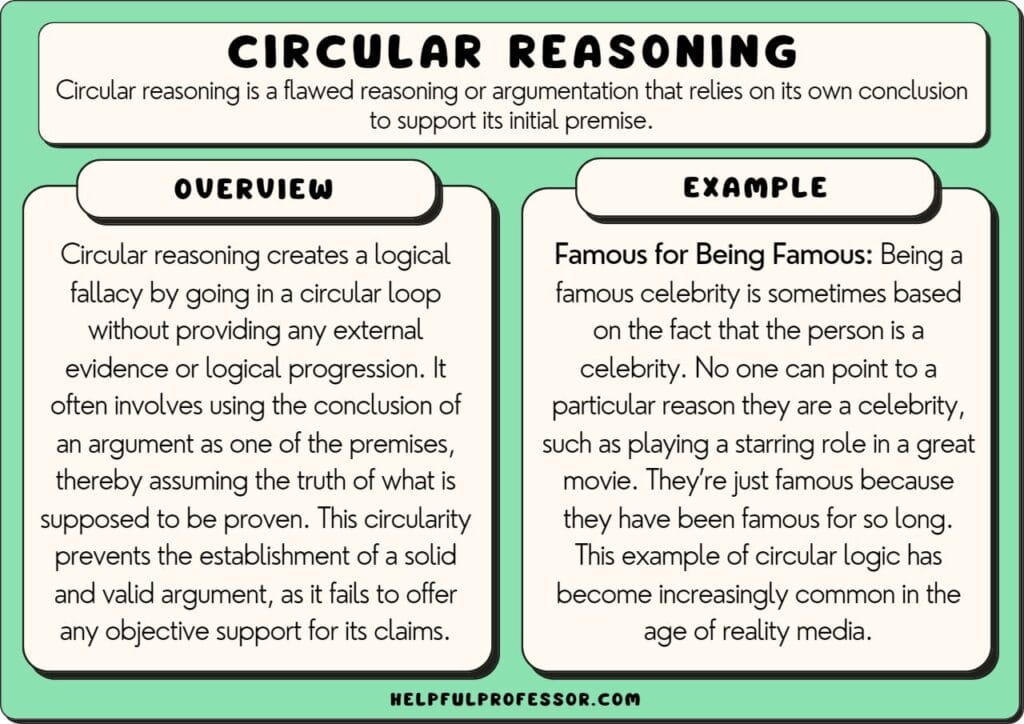
6️⃣ Circular Reasoning
The circular reasoning fallacy occurs when the argument's conclusion is used as its own premise. In other words, it simply restates the argument rather than proving it, making it a circular loop that lacks additional evidence or support.
In the context of residential construction, this fallacy can surface when a contractor or salesperson makes a claim without providing new information or evidence. It’s often a tactic used to make a statement seem more convincing without actually strengthening the argument.
Example:
- Scenario: A contractor insists, “This builder is the best because they only deliver the best value homes.”
- Explanation: The claim that the builder is the best value is simply repeated in a different way, without offering actual evidence or reasons to support the claim.
How to Spot It:
- Look for Repetition: If you notice that the argument’s conclusion seems to repeat the premise without adding new evidence, it’s likely circular reasoning.
- Ask for Supporting Evidence: Request examples, case studies, comparisons or data that substantiate the claim beyond just repeating it.
Understanding circular reasoning can help you identify weak arguments and push for stronger evidence during decision-making. It ensures that your choices are based on clear, well-supported information.
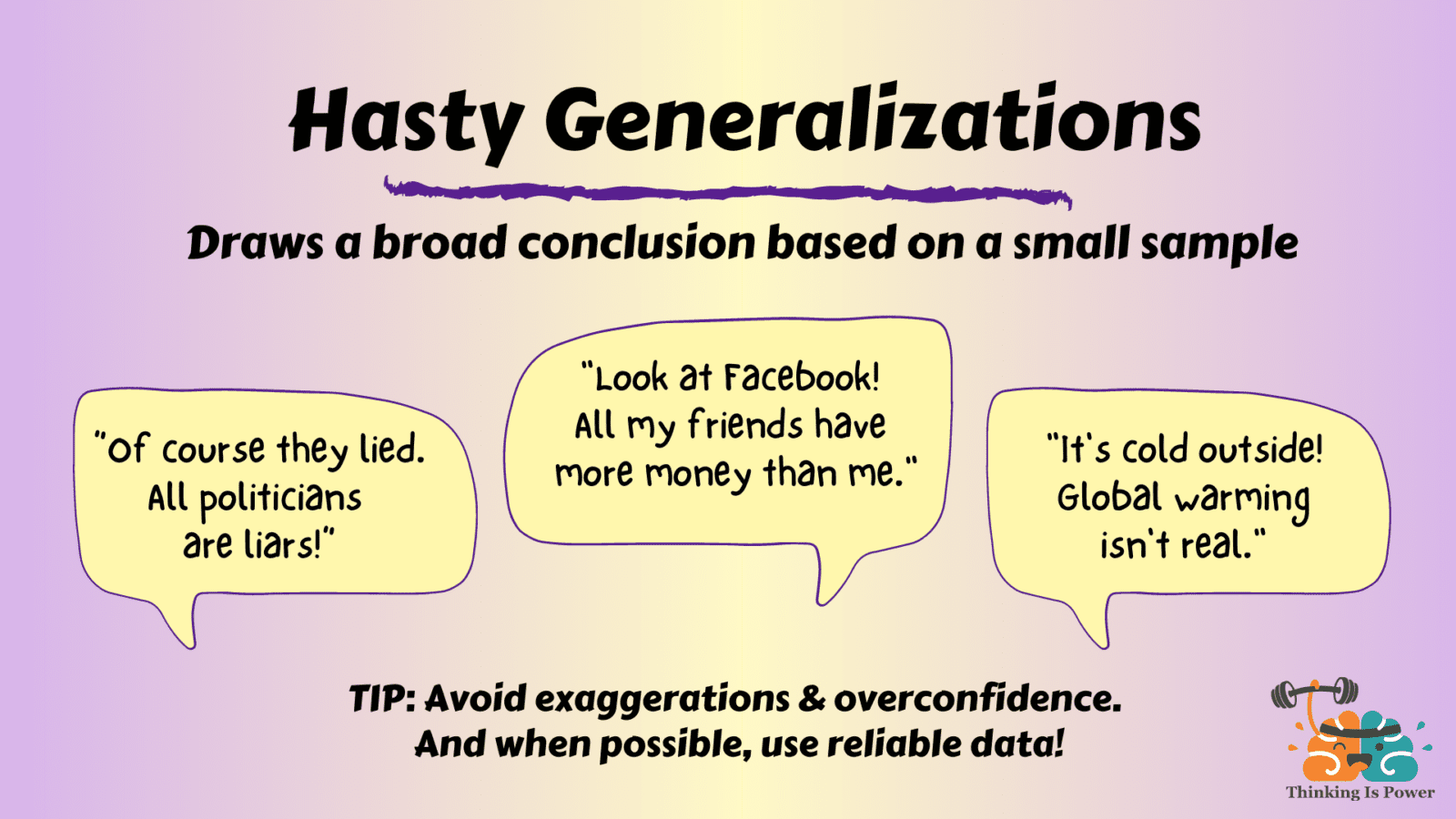
7️⃣ Hasty Generalisation
The hasty generalisation fallacy occurs when someone makes a broad claim based on limited or insufficient evidence.
It’s essentially jumping to conclusions without enough data to support the argument.
This fallacy can be particularly misleading in the construction industry, where complex decisions should be based on comprehensive information rather than isolated experiences.
In residential construction, this fallacy might surface when home owners make decisions based on a single experience or when contractors generalise based on one project’s outcome.
Example:
- Scenario: After encountering a single unreliable contractor, a home owner concludes, “All builders are dishonest and unreliable.”
- Explanation: This statement makes a sweeping generalisation based on limited evidence, ignoring the fact that many reputable and reliable builders are available.
How to Spot It:
- Check the Sample Size: Be cautious if a conclusion is drawn from one or two examples rather than a larger, more representative set of data.
- Ask for Broader Evidence: Look for additional evidence or perspectives before accepting or making a generalised claim.
Being aware of hasty generalisations helps ensure that your decisions are informed by a wider set of experiences and data, leading to fairer evaluations and better outcomes in your construction projects.

8️⃣ Red Herring
The red herring fallacy involves introducing irrelevant information to divert attention from the main issue. It’s a distraction tactic that shifts the focus away from the real point, making it harder to address the original argument effectively.
In residential construction, red herrings can be used during negotiations or when trying to downplay concerns about a project’s progress or costs.
Example:
- Scenario: You raise a concern about the cost of a material upgrade. The contractor responds by saying, “You shouldn’t be worried about this material cost; the real problem is that council approvals are taking longer than expected.”
- Explanation: While the delay in approvals might be an issue, it’s unrelated to your original concern about material costs, making it a diversion from the main point.
How to Spot It:
- Identify Irrelevant Information: If a response seems unrelated to the original argument or question, it’s likely a red herring.
- Stay Focused: Keep the conversation centred on the main issue by steering back to the original topic and requesting specific answers.
Recognising red herrings helps you maintain clarity in discussions, ensuring that important issues aren’t overlooked in favour of distractions.
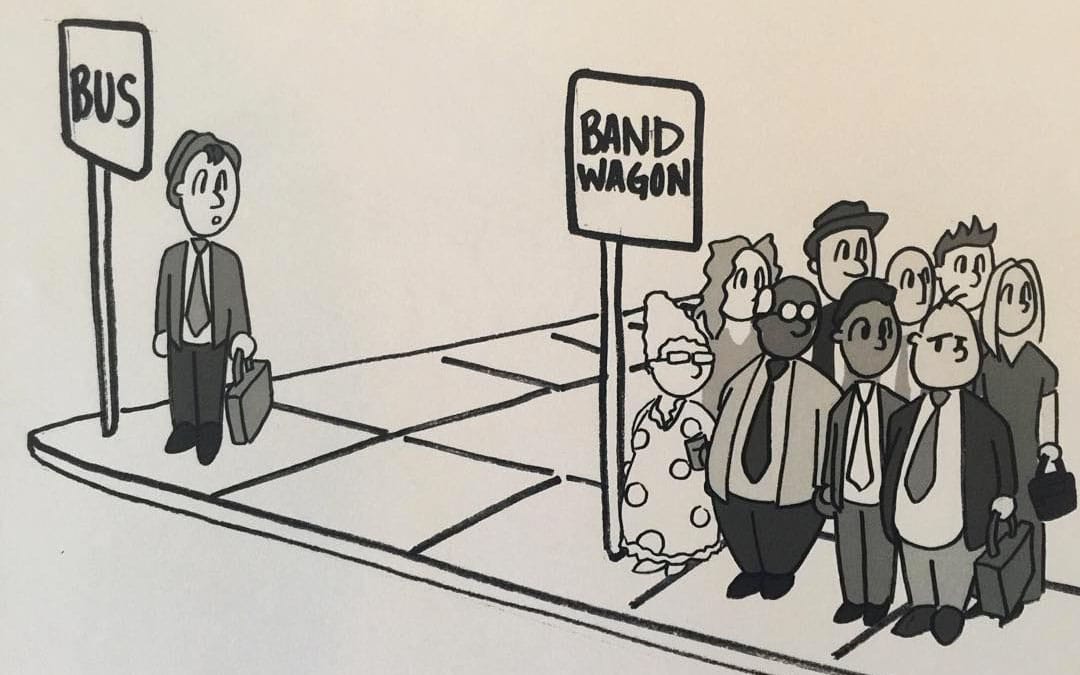
9️⃣ Bandwagon Appeal
The bandwagon appeal fallacy suggests that you should do something simply because everyone else is doing it. It leverages the idea that popular choices are automatically the best choices, which isn't always true—especially in the context of residential construction, where individual needs and circumstances vary greatly.
This fallacy can often be found in sales pitches or when discussing trends in building design or materials.
Example:
- Scenario: A salesperson insists, “Everyone in your neighbourhood is going for open-plan kitchens; you should too.”
- Explanation: While open-plan kitchens may be popular, that doesn't mean they are the best choice for your home, budget, or personal preferences.
How to Spot It:
- Look for Popularity Arguments: Be cautious if the main argument for a decision is that “everyone is doing it.”
- Evaluate Personal Needs: Consider whether the popular option actually aligns with your needs, budget, and long-term goals.
Avoiding the bandwagon appeal allows you to make decisions based on what truly suits your situation, rather than being swayed by trends, The Block, MAFS or anyone else that may not be relevant to your specific construction project.
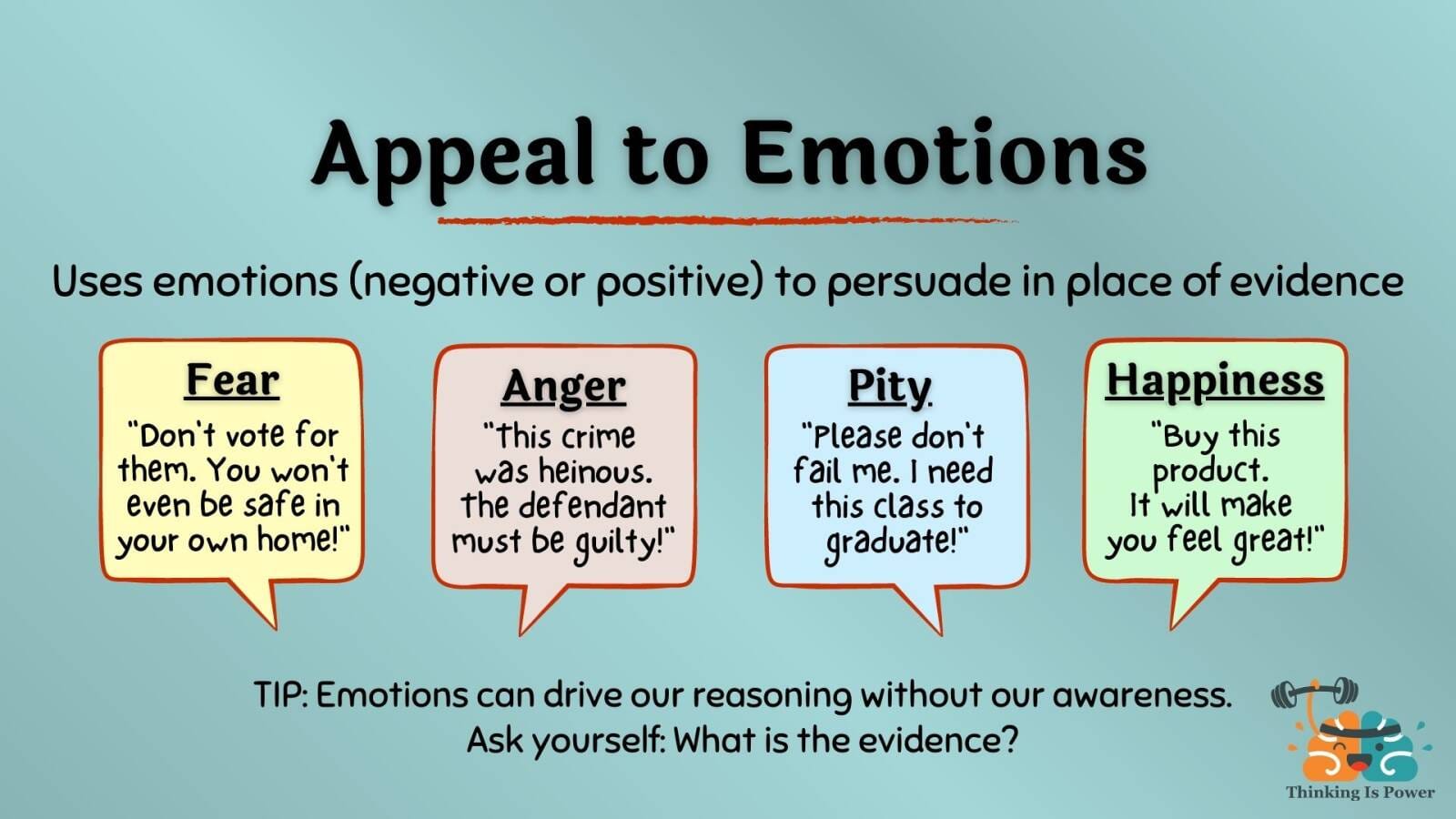
🔟 Appeal to Emotion
The appeal to emotion fallacy occurs when someone tries to manipulate your emotions to win an argument, rather than providing logical reasoning. It relies on making you feel fear, pity, anger, or joy to persuade you, rather than using facts or evidence.
In residential construction, this fallacy can be used to make you feel rushed or fearful about certain choices.
Example:
- Scenario: A contractor says, “If you don’t upgrade to this premium security system, your family could be at risk.”
- Explanation: While security is important, this argument relies on fear rather than evidence of why the premium option is genuinely necessary.
How to Spot It:
- Identify Emotional Manipulation: Be wary if the argument seems designed to evoke a strong emotional response rather than provide clear evidence or reasoning.
- Seek Facts: Ask for specific data, facts, or comparisons that justify the recommendation, beyond emotional appeals.
Being aware of emotional appeals can help you make rational decisions based on evidence and needs, rather than being driven solely by feelings.
Conclusion
Understanding logical fallacies is like having a toolbox for clear thinking and better decision-making. These fallacies often show up in discussions, sales pitches, and even marketing messages. Being able to recognise common errors like ad hominem attacks, straw man arguments, or appeals to authority, you can keep your focus on what really matters—making informed, logical decisions about your home.
When you spot a logical fallacy, don’t be afraid to challenge it. Ask for clearer evidence, question exaggerated outcomes, and stay grounded in the facts. Whether you’re negotiating with builders, discussing renovation plans, or deciding on materials, these skills will help you navigate the the construction of your new home with confidence.
FAQS
What is a logical fallacy?
- A logical fallacy is an error in reasoning that can make an argument invalid or misleading. It often results in faulty conclusions, affecting how we perceive or make decisions.
Why should I understand logical fallacies as a home owner?
- Knowing logical fallacies helps you make more informed decisions, especially during negotiations or when evaluating advice and sales pitches in construction projects.
Are all logical fallacies intentional?
- No, logical fallacies can occur unintentionally due to misunderstandings or a lack of information. However, they can also be used deliberately to manipulate outcomes.
How can I spot logical fallacies during discussions?
- Pay attention to the structure of arguments, check for exaggerated claims, and ask for specific evidence. Be wary of emotional appeals and arguments that seem too simplistic.
What’s the most common logical fallacy in construction sales pitches?
- Appeals to authority and false dilemmas are commonly used. Salespeople might cite ‘experts’ to support their claims or present limited options to pressure a decision.
Can understanding logical fallacies help in contract negotiations?
- Yes, it can help you identify weak arguments or unfair terms, allowing you to negotiate more effectively by focusing on facts and well-supported positions.
Is recognising logical fallacies useful beyond construction?
- Absolutely. Logical fallacies appear in everyday conversations, media, advertising, and politics. Spotting them is a valuable skill in many areas of life.
How do I deal with someone using a logical fallacy against me?
- Stay calm, clarify your position, and ask for specific evidence or reasoning. Redirect the conversation back to the main issue without getting distracted by faulty arguments.
Can using logical fallacies ever be helpful?
- While they might sometimes help to persuade others, relying on fallacies can backfire if someone recognises them. It’s best to use clear, well-supported arguments to build trust and credibility.
Further Reading




5 Whys are a great starting point for root cause analysis


This is the most widely used term in Construction Contract Law - but what and who is reasonable?


